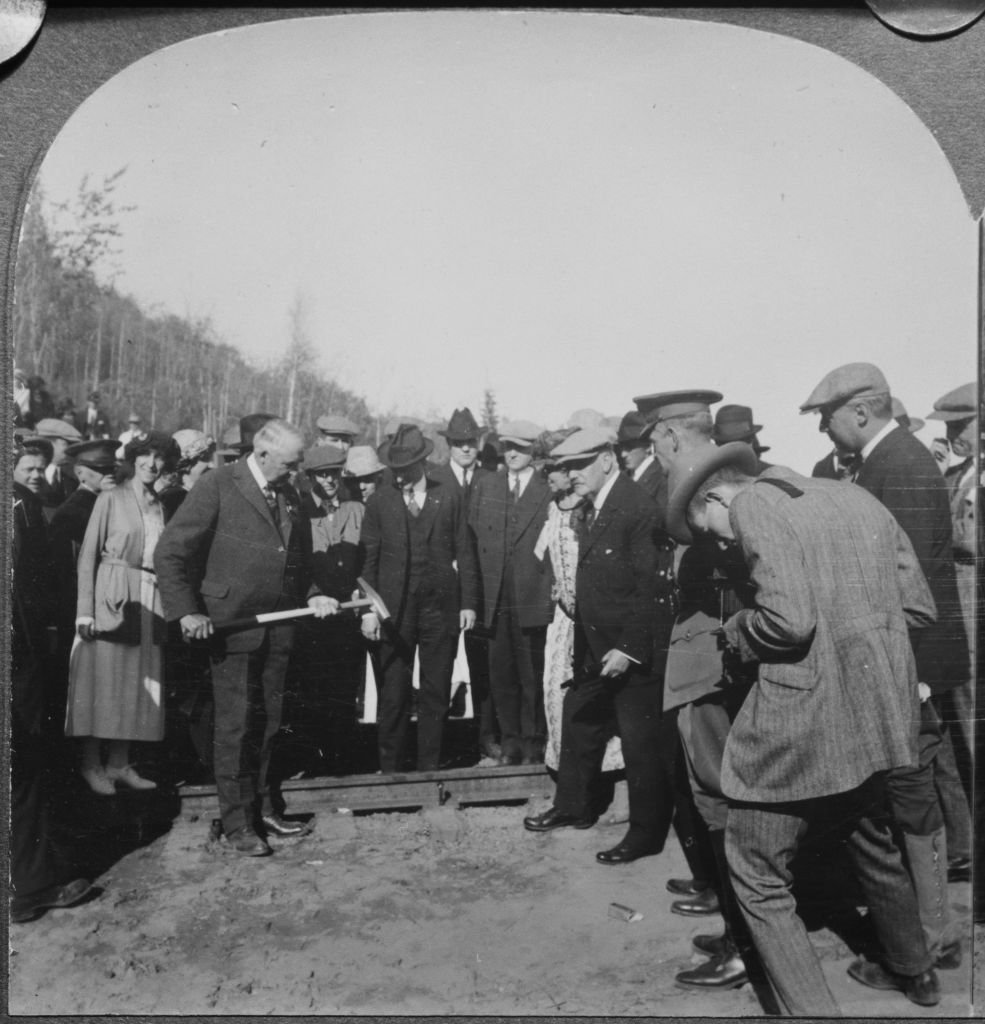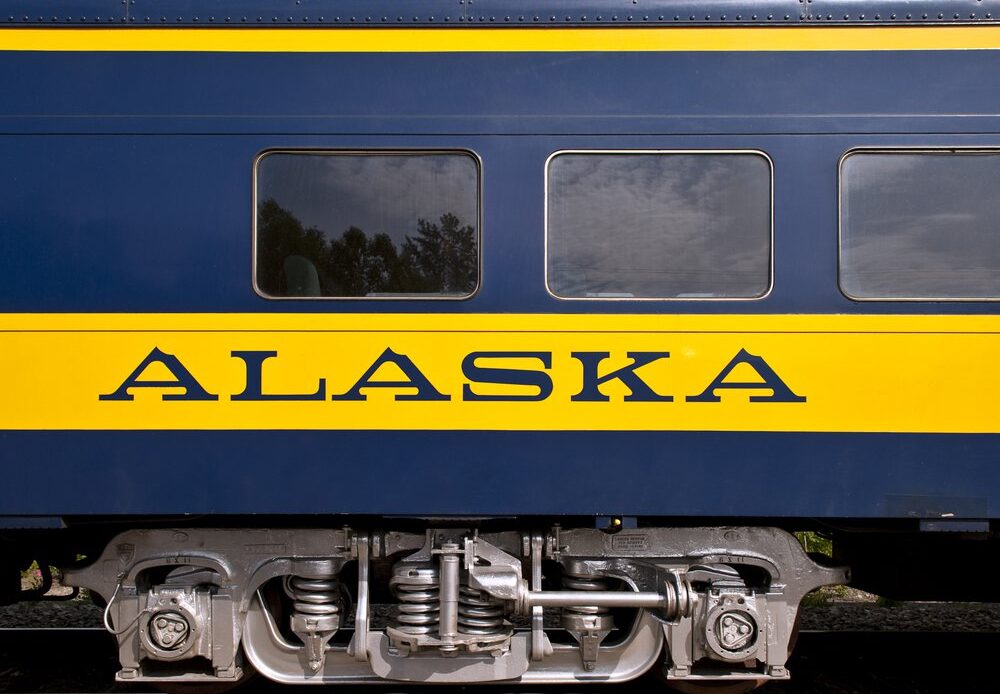Alaska Railroad’s main line stretches 470 miles between Seward and Fairbanks.
John Greim/LightRocket via Getty Images
For every 640 square miles in Alaska, there is just one mile of paved road. Which is why, when Congress set its sights on the rugged northern territory for strategic military operations and economic development more than 100 years ago, it chose to develop a different mode of transportation: The Alaska Railroad.
The Alaska Railroad’s main artery stretches 470 miles, from Seward in the south to Fairbanks in the state’s interior. In the early 1900s, Congress took an interest in Alaska’s mineral deposits and strategic location and funded a $35 million, eight-year construction project. Beginning in 1914, roughly 4,500 workers utilized pre-existing tracks from two defunct railroad companies, Alaska Central Railroad and Alaska Northern Railway Company, to build the contiguous transportation link up the state.
After its completion in June 1923, President Warren Harding took a tour across the Western United States to Alaska that he called the “Voyage of Understanding.” For about 30 miles between Wasilla and Willow, the president drove the train himself, with the First Lady beside him. His voyage ended in the village of Nenana, where he drove the final golden stake into the ground connecting the railroad’s northern and southern tracks and marking the project’s completion.
President Warren Harding drives in the last spike of the Alaska Railroad in Nenana, Alaska, in July 1923. Keystone View Company/Archive Photos/Getty Images
Today, the Alaska Railroad Corporation—a self-sustaining state company managed by a seven-member board of directors appointed by the governor—serves as the primary transportation and freight delivery service to and from remote communities, while also providing a key link to the tourist industry. The rails, which are open year-round, carry about half a million passengers annually from a hub in Anchorage to nine different destinations, including Denali National Park, Chugach National Forest and the Kenai Peninsula. Along the way, travelers have the option to disembark for excursions, such as hiking at the base of North America’s tallest peak or rafting at Spencer Glacier.
“Alaska is such a young state,” says…
Click Here to Read the Full Original Article at Travel | smithsonianmag.com…
